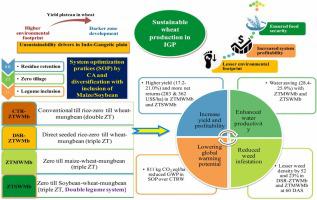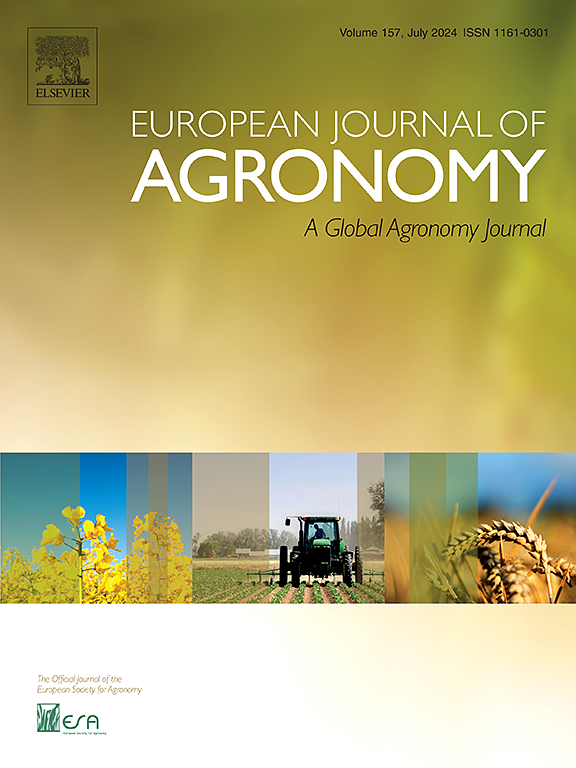On-farm evidence on breaking yield barriers through optimizing wheat cropping system in Indo Gangetic Plain
Abstract
The wheat production in the food basket of South Asia has plateaued with threats of environmental sustainability and posing a serious challenge to future food security. For sustainable wheat production in conventional rice-wheat (CTRW) systems under changing climatic scenario, atwo-year on-farm study was conducted. We evaluated system optimization practices (SOP) of legume inclusion with CTR-zero-tillage (ZT) wheat-mungbean (CTR-ZTWMb) and direct seeded rice-ZT wheat-mungbean (DSR-ZTWMb) and triple ZT (raised bed) based futuristic systems of maize-wheat-mungbean (ZTMWMb) and soybean-wheat-mungbean (ZTSWMb). The global warming potential (GWP) of wheat production was significantly reduced by 811 kg CO2 eq/ha (783−861) in the SOP compared to CTRW. Moreover, the water usein wheat reduced by 85.9 and 85.2 ha-mm/ha in CTR-ZTWMb and DSR-ZTWMb with higher reduction in ZTMWMb and ZTSWMb by128.7 and 118.0 ha-mm/ha, respectively over CTRW. Similarly, the total weed density was reduced at 60 (39 and 52 %) and 90 (38 and 49 %) days after sowing with CTR-ZTWMb and DSR-ZTWMb over CTRW. However, the weed density reduction was lesser with ZTSWMb and ZTMWMb at 60 (3.0 and 23.6 %), and 90 (9.8 and 31.0 %) days after sowingcompared to the CTRW.The partial factor productivity (PFP) of NPK applied was 8.5–19.0 % higher under SOP over the CTRW. The use of non-renewable energy in wheat cultivation was reduced by 24.4–28.9 % with SOP over CTRW. The enhancement in wheat grain yield (7.4–11.8 %) and net returns (98–169 US$/ha) was also recorded with CTR-ZTWMb and DSR-ZTWMb and this gain in futuristic systems (ZTMWMb and ZTSWMb) was much higher in grain yield (17.2–21.0 %) as well as in net returns (283 and 362 US$/ha) over CTRW. The adoption of these SOPs on 1 million ha could produce 0.37–1.05 million t additional wheat over CTRW. The on-farm study evidenced thatwheat production with system optimization practices of legume inclusion and zero tillage are better alternatives to achieve higher productivity and profitability with a lesserenvironmental footprint in Indo-Gangetic Plains and similar agroecological regions.


 求助内容:
求助内容: 应助结果提醒方式:
应助结果提醒方式:


